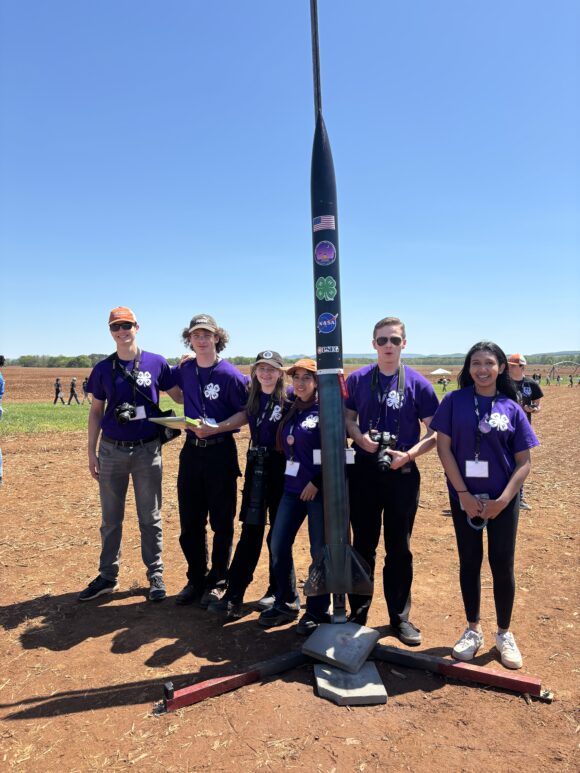
Members of the 4-H ResistoJets Rocketry Club who participated in the 2024 NASA Student Launch Competition in Huntsville, AL.
On June 7, the Morris County 4-H team from the ResistoJets Rocketry Club was recognized for its first place “Altitude Award” in the middle and high school division of the 2024 NASA Student Launch Competition.
The 2024 NASA Student Launch Initiative virtual awards ceremony, hosted by the Marshall Space Flight Center, featured presentations of awards to the overall category winners as well as other awards, including those presented for safety, vehicle design, social media presence and STEM engagement.
More than 1,000 students from across the U.S. and Puerto Rico launched high-powered, amateur rockets and scientific payloads on April 13, just north of NASA’s Marshall Space Flight Center in Huntsville, Alabama, as part of the agency’s annual Student Launch competition that saw students from colleges, universities, high schools, middle schools, and informal education groups who designed, built, and launched rockets.
The ResistoJets Rocketry Club team, the only team from New Jersey, was one of the 70 teams that worked on this challenge for eight months and was among the 47 teams who were privileged to participate in the final launch week events in the spring. The team was just 43 feet off of their target altitude of 3,900 feet, earning it the “Altitude Award” in the middle and high school division.
View the launches, including the interview with the Morris County team captured in this video (fast forward to 6:10:45 for the ResistoJets’ launch and 8:11:00 for the interview with the NJ Rocketry team!)
The awards ceremony is archived on NASA’s Marshall Space Flight Center’sYouTube channel.
ResistoJets Rocketry Club team members shared their reactions about the overall experience.
Sean M., team lead: “Our team really grew – in members and expertise – since last year”
Nurayn H.: “Thank you to 4-H and our other sponsors for their support!”
Holt E., safety officer: “Safety was our number one priority in this project. Getting all the deliverables done to make it to the final launch, and having fun, were the other two. It was a lot of work – and a lot of fun.”
Mia O.: “We learned a lot about time management and communication – and what to do better in the future.”
Divya K.: “The payload challenge was really hard. We had a great design and it’s disappointing that it didn’t work out.”
Very few teams were able to deploy their payload at the final launch. The University Payload Challenge was to land “STEMnauts,” something representing astronauts and their stats about surviving the decent and impact of landing, in a separate device and in a safe manner.
Learn more about NASA Student Launch Challenge.

